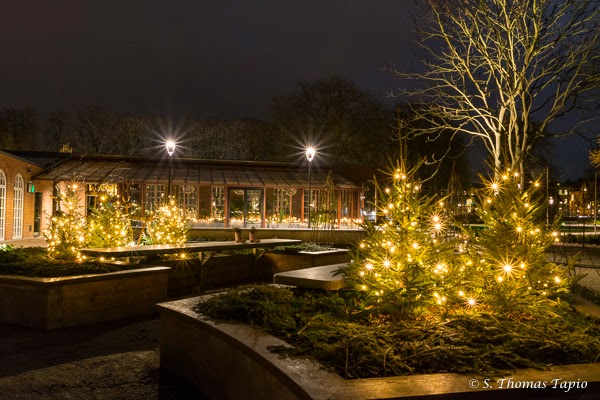Development of cultural landscapes
Cultural reserves: Why, What, Where
Örnanäs
Sporrakulla Farm
Sporrakulla Farm
ANCIENT HUMAN SETTLEMENTS
 |
| A frozen lake at Örnanäs cultural reserve. |
Development of cultural landscapes
During the younger stone age (4800-1800 BC) humans settled down from being nomadic hunters-gatheres to a more steady going agricultural society. During the bronze age (1800-500 BC) settlements increased in number and the growing population needed nourishment. Thus farming and livestock rearing became more and more important. Villages existed already during the older iron age (500 BC - 400 AC) but it was not until the younger (400 - 1050) iron age that the larger Scanian villages where formed and modern cultivation forms started. Names of villages ending with RÖD (=clearing of land) dates back to years 1050 - 1500 - this name has puzzled Mrs. T and myself ever since we moved to Scania. The stone fences throughout Scania is a produce of the clearing.
Until the early 19th century the grounds in a village formed a mosaic of fields and meadows close to the village and again pastures for domestic animals further away. To protect the fields the cattle was taken to the pastures along special, protective passages. The animals where left out for the whole summer season. The trees along the fields and pastures where used as logs and fence material. Cultural landscapes are also formed by industrial activity. For more information see www.lansstyrelsen.se
Until the early 19th century the grounds in a village formed a mosaic of fields and meadows close to the village and again pastures for domestic animals further away. To protect the fields the cattle was taken to the pastures along special, protective passages. The animals where left out for the whole summer season. The trees along the fields and pastures where used as logs and fence material. Cultural landscapes are also formed by industrial activity. For more information see www.lansstyrelsen.se
 |
| Örnanäs (forest)farm - children playing with sheep and their pony. |
Cultural Reserves: Why, What, Where.
As an analog to Nature Reserves the Culture Reserves, in Sweden, were stipulated by law in 1999 to comprise all landscapes characterized as valuable and where all natural and cultural values can be protected and taken care of. This includes also traditions, activities and knowledge. Presently there are 41 cultural reserves in Sweden covering the whole country and Örnanäs in northeastern Scania was the first to be established (in 2006). (wikipedia).
Örnanäs Culture Reserve is administered by the regional authorities that wants to preserve this area, that is full of culturally and historically traces, for the future generations. The village dates back to 1584, then part of Denmark. The ruins in the above collage is an indication of farms dying out in the 19th and early 20th century. The ruins at the bottom (center) is what is left of the distillery active in late 19th century. There were two farms, The Eastern and Western farm. The Eastern farm has been owned by the same family since 1818 and the Western Farm (below) is the original Örnanäs farm dating back to 1597 until deserted in 1933.
Örnanäs is near Sibbhult with signs guiding from route 119. Two paths with QR-codes have been marked. The red takes one through the village to a small lake and is easily accessible. The yellow path is longer and thought the forest. Maps are available at the entrance and the area is open all year.
 |
| Forest of Kulla in the vicinity of Sporrakulla Farm. |
Sporrakulla Farm
 |
| Sporrakulla Farm. |
Sporrakulla is close to Örnanäs, near Sibbhult in Östra Göinge, and the two places can be visited on the same day. This farm has been leased to farmers and the first one mentioned was Bendt Oredsen 1659. The last to leas it was Carl Person who left the farm in 1964. In the middle of the 19th century the lease consisted of cash money, butter, charcoal, tar and labour for Råbelöfs Manor. The farm is surrounded by ancient cultural landscapes, stone fences and trees used for fodder in the winter time (see above). It is now protected by the authorities and a great venue for visits and spending one sunny afternoon with the family or friends over a cup of picnic coffee.
 |
| Sporrakulla Farm |
 |
| All that is left from a farm. |
Also in this same region is a former soldiers dwelling that, according to traditions, where maintained by the neighboring farms . The soldiers were from the Northern Scanian Infantry Regimen. This well kept place is definitively worth a visit. Five soldiers lived here since 1818.
As a friend of (cultural) history this afternoon was well spent and comparable to the Ballingstorp Farm that we visited earlier, see previous blogpost. How much and how fast hasn't life changed over the years. It is therefore of great value to preserve the cultural landscapes for the coming generations to understand that there were times when no cars, TV's or computers existed and that work was laborious where your own hands counted.
When it was time to return home the sun was very low casting only a few rays in selected places like the below bushes along the road side.
Thank you for a great day letting us understand more about cultural landscapes and the way we used to live a long time ago.
Have a nice week everyone!
:-)




_Fotor_Collage.jpg)






























